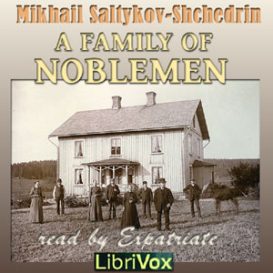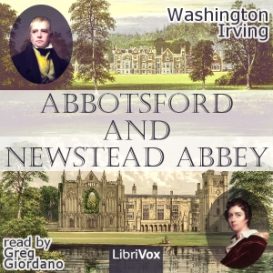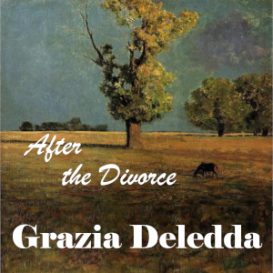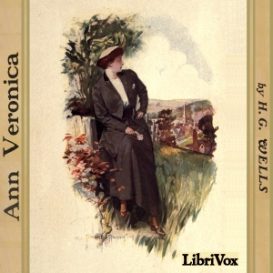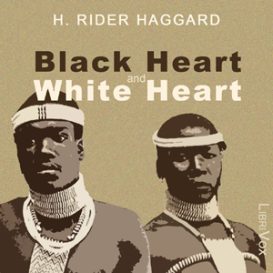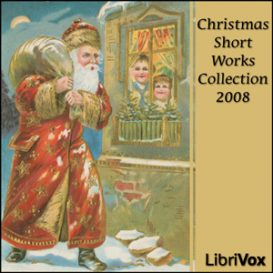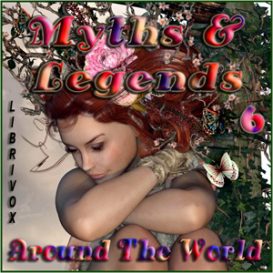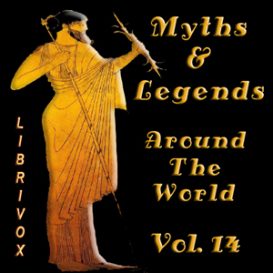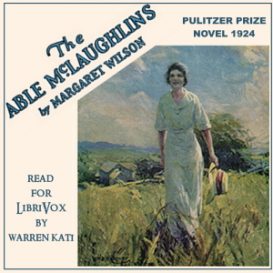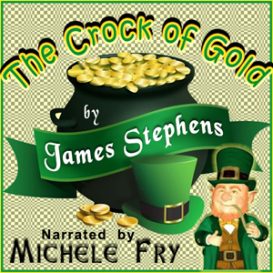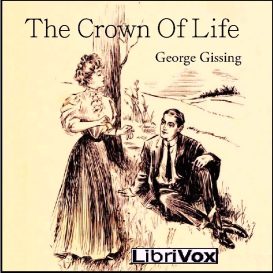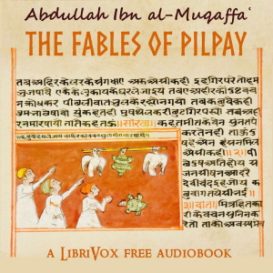Culture & Heritage Fiction
Showing all 20 results
A Christmas Miscellany 2020
Nine stories, chapters, or essays about Christmas or around Christmas. – Summary by David Wales
A Family of Noblemen
Meet the Golovliovs, the ultimate dysfunctional family. In the difficult transition years before and after the liberation of Russia?s serfs, the Golovliovs are a gentry family ill-equipped to face the adaptations necessary in the new social order. Petty, back-biting, greedy, rigid, ignorant, and cruel, their personalities are captured in the array of nicknames they themselves give each other: The Hag, Little Judas, Simple Simon, Pavel the Sneak, the Orphans, the Blood-Sucker. They hate each other ferociously and utterly despise the peasants around them, who are gradually awakening to the potentialities of their new freedoms. In this most famous of Saltykov-Shchedrin?s novels, there is a keen sympathy toward the plight of women caught in the complexities of social change: Anninka and Lubinka, the aristocratic orphans who, seeking independence, recklessly cast themselves into the bohemian life; the matriarch Arina Petrovna, whose desperately vigorous administration of the estate leads to an exhilarating but only temporary stability; the peasant girl Yevpraksia, who is resistlessly taken by the loathsome Porfiry Vladimirych as his mistress. Far from a piece of social propaganda, A Family of Noblemen shows a subtle portraiture of the complex characters and convoluted circumstances of the time. (Expatriate)
Abbotsford and Newstead Abbey
Although this book may not have the immediately recognizable title of, say, ?Rip Van Winkle? or ?Legend of Sleepy Hollow,? this book deserves its place among the pantheon of Washington Irving?s classics. Irving, who traveled extensively in his youth and throughout his life, was given a firsthand look into the lives of two great writers of the Empire: Sir Walter Scott and Lord Byron. Irving first chronicles his visit to Abbotsford, the home of Sir Walter Scott, whom he notes had not, at the time of his stay, yet received his title of ?baronet.? Scott gives Irving a personal tour not only of his home but of the surrounding neighborhoods and landmarks that are a part of Abbotsford. We get a unique glimpse into the private life of the celebrated writer and the reverence the people of his time held him in. Irving next moves on to Newstead Abbey, the home of the then-late Lord Byron. His travels are guided by Colonel Wildman, the individual who purchased Newstead Abbey following Byron?s death, and who restored the building to its former glory. In this portion of the book we learn of the fantastic and bizarre Byron family and its connection to Robin Hood and the famed locales of Sherwood Forest and Nottingham. Few American writers gained famed for their extensive work outside of the United States. Washington Irving was unique in many respects, not the least of which was his enthusiastic curiosity of the ?homeland? of so many Americans who were born literally around the time America was. His detailed writings of life in the early 19th century and the changes that were already taking over the more rural areas, can?t help but make one yearn for the even simpler times prior to his visit. (Summary by Greg Giordano)
Adam Bede (version 2)
George Eliot was the pen name of Mary Ann Evans ? an ironic ?deception? given that Adam Bede, her first novel, is written unashamedly from a feminist standpoint. The story centres on a pastoral love triangle. Two young men, carpenter Adam Bede and squire Captain Arthur Donnithorne, are both in love with the mercurial Hetty Sorrel. There?s a further love interest between Adam and beautiful lay preacher Dinah Morris. The setting is a country village in the north of England in the last years of the eighteenth century. The author paints a wonderful landscape of contemporary life as it really was, and excels in the portraits of her characters. Each is flawed, each has their own passions, each is unique, and through this great novel, Eliot put her stamp on literature and on the way we view the vagaries of character, helping us to see people as they really are. This is one of the greatest novels in the English language. First published in 1859, Adam Bede has never been out of print since, which speaks volumes about its timeless quality. – Summary by Tom Denholm
After the Divorce
Giovanna and Costantino Ledda are a happily married couple living with their young child in a Sardinian country village close to their extended family. Costantino is wrongly convicted of murdering his wicked uncle and with no way of supporting herself, Giovanna reluctantly divorces him and is driven to marry Brontu Dejas, a wealthy but brutish drunkard who has always lusted after her. As well as enduring a marriage amounting to slavery, Giovanna is derided by villagers for having two husbands. When Constantino is freed after the real murderer confesses to his crime, he and Giovanna are together again, but this time their relationship is outside the law, and sets both on a path of destruction, at the mercy of religious and social forces they cannot control. The author, Grazia Deledda, won the Nobel Prize for Literature in 1926, for writings which show passion and sympathy for the people of her native Sardinia, and ?After the Divorce? (Dopo il Divorzio) is one of her finest works. – Summary by Tom Denholm
Ann Veronica
Ann Veronica was a controversial book detailing the development of a naive school girl into a “New Woman”. When it was published, the Spectator described it as a “poisonous book … capable of poisoning the minds of those who read it.” Although it is unlikely to offend modern listeners in this way, this novel addresses many feminist issues that are still relevant today. (Summary by Joy Chan)
Black Heart and White Heart
Black Heart and White Heart, is a story of the courtship, trials and final union of a pair of Zulu lovers in the time of King Cetywayo. (Introduction by H. Rider Haggard)
Christmas Short Works Collection 2008
The multilingual Christmas Short Works Collection 2008, containing public domain short stories, essays, poems, hymns, and scripture passages recorded by a variety of LibriVox members.
Fairy and Folk Tales of the Irish Peasantry
This is a collection of Fairy and Folk tales. The poet William Butler Yeats collected them from around the Western part of Ireland and translated them near the end of the 1800s. – Summary by Michele Eaton
Felix Holt, The Radical
“Harold Transome is a landowner who goes against his family’s political tradition (much to his mother’s distress), while Felix Holt is a sincere radical. The setting of the book, the 1832 parliament election, is used to discuss the social problems of that time. A secondary plot involves Esther Lyon, the stepdaughter of a minister who is the real heiress to the Transome estate, with whom both Harold Transome and Felix Holt fall in love. Esther loves poor Felix Holt, but would she choose a comfortable life with Harold Transome?” (Summary by Stav Nisser)
Myths and Legends Around the World – Collection 06
You get to choose what you want to read! (All recordings in English]) So long as the source is Public Domain for you, any short story or chapter that tells of legends, heroes, myths, or ancient lore, is welcome. We are looking for representations of many different cultures within each collection. If you have questions of whether a source is Public Domain for you (remember that if you live outside the U.S., public domain laws may be more strict for you), I recommend asking about that in this project’s discussion before you begin recording. Simply post the question with a link to the source you’ve found. 🙂 Limit of 2 sections per reader in a given Myths & Legends collection. – Summary by Lynette Caulkins
Myths and Legends Around the World – Collection 13
This collection is dedicated to recordings of short mythical or legendary works which are in the Public Domain. The stories tell of legends, heroes, myths, and ancient lore from many different cultures. (Summary by Lynette Caulkins)
Myths and Legends Around the World – Collection 14
This collection is dedicated to recordings of short mythical or legendary works which are in the Public Domain. The stories tell of legends, heroes, myths, and ancient lore from many different cultures. (Summary by Lynette Caulkins)
The Able McLaughlins
The Able McLaughlins won the Pulitzer Prize for a novel in 1924 in Margaret Wilson’s debut work. Aptly described as “Little House on the Prairie – but for adults” the novel follows a group of Scottish families who pioneer the Iowa prairie in the 1860?s. The main storyline concerns Wully, the eldest McLaughlin son, who returns home from the Civil War to find that his sweetheart, Chirstie, has experienced an unspeakable tragedy that will profoundly affect the couple’s lives. Their story is one of shame and honor, secrets and guilt, fear and loathing, revenge and forgiveness. But perhaps the stars of the novel are the strong older women such as Wully?s mother, Isobel, whose love and matriarchal strength keeps the family together as well as Chirstie?s stepmother, Barbara, who finds ways to make her good-for-nothing husband keep his promises. Interlaced with the plots are richly detailed descriptions of frontier prairie life, the love that families share, and the relationships within the Scottish immigrant community. (Warren Kati)
The Age of the Motored Things
LibriVox volunteers bring you 13 recordings of The Age of the Motored Things by Ella Wheeler Wilcox. This was the Fortnightly Poetry project for October 6, 2013. Ella Wheeler Wilcox was an American author and poet. Her best-known work was Poems of Passion. Her most enduring work was ” Solitude”, which contains the lines: “Laugh, and the world laughs with you; Weep, and you weep alone”. Her autobiography, The Worlds and I, was published in 1918, a year before her death. A popular poet rather than a literary poet, in her poems she expresses sentiments of cheer and optimism in plainly written, rhyming verse. Her world view is expressed in the title of her poem “Whatever Is?Is Best”. None of Wilcox’s works were included by F. O. Matthiessen in The Oxford Book of American Verse, but Hazel Felleman chose no fewer than fourteen of her poems for Best Loved Poems of the American People, while Martin Gardner selected “Solitude” and “The Winds of Fate” for Best Remembered Poems. (Summary from Wikipedia)
The Crock of Gold
This is a comic novel written by Irish author James Stephens, a quick-witted storyteller whose pantheistic philosophy is revealed in his adult Irish fairy tales. His first novel, The Charwoman’s Daughter (1911), humorously examines the life and fantasies of a poor Dublin mother and daughter. His second, The Crock of Gold (1913), again showcases his unique writing style, quirky thoughts, grasp of irony and cleverness of phrase. No conformity here, lots of head-scratching twists and turns that reveal odd bits of wisdom too! The main characters are an extremely pedantic Philosopher, his revengeful wife, their sweet innocent children lured down leprechaun holes, a teenage girl seduced by Pan (the god of lust and carefree living) then saved by Angus Og (the Irish god of youth, love and beauty), culminating in a giant parade of Irish gods. Stephen’s serious philosophy is on display here and there, and we learn many useful tips for dealing with fairies, goblins and gods, especially that no good comes of stealing a leprechaun’s crock of gold! ~Summary by Michele Fry
The Crossing
This is an historical fiction novel. Many real characters of history are included, as well as fictitious ones. The saga takes place in the period slightly before the American Revolution, and extends for some years after that war. It covers the first movement of southern colonists, over the mountains, into Kentucky, then into the lands that would become Ohio, Indiana, and Illinois. The battles to take these lands from the British make up much of the drama. The characters also move into New Orleans to face off with the French. This was a major best selling novel when released. The writer, Winston Churchill, was a most prominent American novelist of the time. The Prime Minister of England, Winston S. Churchill, was his contemporary, but no family relation. This book contains content that some listeners might find offensive. (Summary by Bob Rollins)
The Crown Of Life
So what is the crown of life? Follow the journey of Piers and Irene as they attempt to discover. It is both a coming of age novel and love story at the same time, one which would bring delight to philosophers with many conversations for and against imperialism, romantics who would follow the long courtship in the center of the plot, and sociologists who would follow with interest the vivid way in which George Gissing describes the society in which he lived. – Summary by Stav Nisser.
The Fables of Pilpay
These moralistic stories within stories date back to the Sanskrit text Panchatantra (200 BC ? 300 AD). They were first translated into Arabic by a Persian named Ruzbeh who named it Book of Kalilah and Dimna and then by Abdullah Ibn al-Muqaffa and later Joseph Harris in 1679 and then remodeled in 1818. Max Mueller noted that La Fontaine was indebted to the work and other scholars have noted that Jeanne-Marie LePrince de Beaumont and John Fletcher were both familiar with the fables. The Fables of Pilpay are a series of inter-woven fables, many of which deploy metaphors of anthropomorphized animals with human virtues and vices. (Summary by The introduction and Wikipedia)



